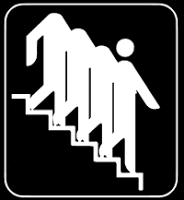Owen Roberts
A class in Net Art by Owen Roberts
Early web artists and net.art
Many of the early works of Internet art are attributed to a small group of practitioners who called themselves net.art or net.artists, an ironic gesture the nomenclature of the web. These works started to appear in 1993 with the rise of graphical web browsers like netscape. These early works often took up the Internet itself as their subject, playing with the form and function of the tools that existed at the time, HTML, browsers, email, message systems and Java plugins. These works mixed collage, sound, text, video, animation and interaction. They formed a community online, one message boards like Nettime and 7-11. There were often disagreements within the small community about what they represented and the meaning of art in general, some working to actively defy interpretation and access points from the greater art world, while others wanted to be recognized by the art world and create a market for their work.
wwwwwwwww.jodi.org, Jodi.org (1995).
My boyfriend came back from the war, Olia Lialina (1996). Other versions.
Agatha Appears, Olia Lialina (1997).
Form Art, Alexei Shulgin (1997).
Link-X, Alexei Shulgin (1997).
_readme.html, Heath Bunting (1996).
The Great Wall of China, Simon Biggs (1996).
Hell.com, Kenneth Aronson (1995).
Darko Maver, 0100101110101101.org (1998).
King’s Cross Phone In, Heath Bunting (1994).
The Web Stalker, I/O/D 4 (1997)
Every Icon, John Simon Jr. (1997)
Mouchette.org (1996).
Triggerhappy, Thomson and Craighead (1998).
Weightless, Thomson and Craighead (1998).
Now here/Nowhere, Bridhid Lowe (1998).
Cunnilingus in North Korea, Young Hae Industries (2001).
Zombie and Mummy, Olia Lialina (2002).
Clash with commercialism
With the evolution of Web 2.0 and web commerce, the look of the Internet changed dramatically, and corporate online presence led to increased ambiguity between commercial and artistic or editorial content. Some Internet artists created work that called attention to the changes and made work that critiqued online commerce and corporate presence, but the experimental and novel nature of Internet art was marginalized during this period.
Net art repositories
Throughout the history of Internet art, online repositories were founded to catalog art. Often the distinction between the works and the repositories themselves was blurred as in the case of “The Thing”, which started as a BBS (bulletin board system) that predated the World Wide Web, later becoming a web repository of the work that was shared on the BBS and for new work.
adaweb was founded in 1994 by Benjamin Weil, as a platform for conversation and investigation into new forms of art making.
In 1995, the DIA Art Foundation founded DIA Web Artists, which served as a curatorial platform for online art.
Mark Tribe, an artists and curator in Berlin, founded Rhizome.org, an online platform and database of works that used digital media and new technologies generally, as well as Internet art.
In 2002, runme.org was established as a repository for software art, sharing many characteristics, technologies and platforms with earlier Internet artists .
Contemporary Internet art
The movement that compromised early Internet art and net.art faded into obscurity to some extent following the commercialization of the web, but many artists incorporate Internet based work in their practice to this day.
Why have there been no great net artists?
In 1999, Steve Dietz, a curator and “platform creator”, publish the essay, “Why Have There Been No Great Net Artists?”, taking it’s title from the Linda Nochlin essay, “Why Have There Been No Great Women Artists?”, which argued that the role of women in social structures were responsible for repressing the emergence of great female artists. Dietz argues that the platforms for great art are not conducive to the work of Internet artists, which require the context of the Internet itself, much as film and literature occupy different platforms, so the idea that Internet artists should emerge the way artists in the past have is flawed.
There has been some institutional support of net art, but it has been inadequate for the most part and essentially pays lip service to the idea of Internet art, acknowledging its existence without having the proper understanding to support it.
Stolen Pieces, 0100101110101101.org (1995-97).
Superdream Mutation, Peter Halley (1993).
Exploding Cell, Peter Halley (1997).
The World’s First Collaborative Setence, Douglas Davis (1994).
Brandon, Shu Lea Cheang (1998).
Uncomfortable Proximity, Graham Harwood (2000).
Internet art creates an ambiguous market. Selling digital copies of work has always been difficult. One of the only unique things about a website is often its URL, which has by default become the easiest way to sell works of Internet art, but has not proven to be particularly viable for traditional collectors. Other models for commodification have been tested, but with no stand out successes.
Megatronix, Teo Spiller (1999).
While there has always been political art, much of Internet art is politically defined to the extent that it doesn’t operate in the way that we are used to art working. These works blur the distinction of art and activism, much in the way that works from Dada and Fluxus did.
GW Bush website, RTMark (1999).
The Bomb Project, (2000-Present).
Dolores from 10 to 10, Coco Fusco (2002).
They Rule, Josh On and Future Farmers (2001).
Internet art simply has defied definition by the art world, favoring an anti-art and anti-commercial stance that it has adopted from Dada and Fluxus and other influences. Internet art works are often created in direct opposition to established art making practices, as we have seen in the examples of early Internet art, through work continuing to be made today.
Duchamp Sign, Vuk Cosic (1997). History of art for airports.
Resources
- Olga Goriunova — Art Platforms and Cultural Production on the Internet
- Rachel Greene — Internet Art
- Julian Stallabrass — Internet Art: The Online Clash of Culture and Commerce
- Josephine Bosma — Nettitudes
- John Ippolito — Ten Myths of Internet Art
- In the Name of Art — Ewan Morrison and Matthew Fuller
Comments are closed.

